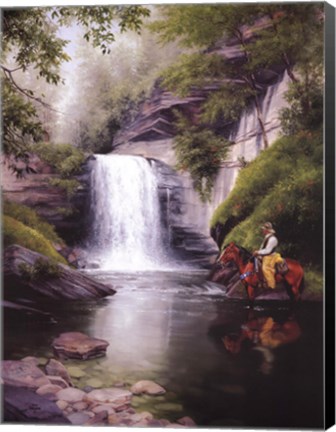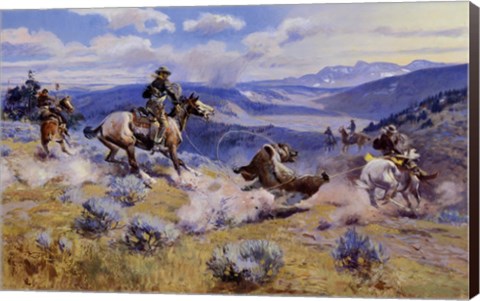What do Billy the Kid, Hoss Cartwright, Jack Sorenson, Wyatt Earp and Charles M. Russell all have in common? The answer, “They’re all beloved figures that, in one way or another, represent the Wild West. Two of them, Jack Sorenson and Charles M. Russell, are Wild West artists that have managed to touch people’s inner cowboy or cowgirl with their creative visions.

Born in the 1950s, Jack Sorenson’s wild west art was clearly influenced by his early years, which he spent part of working at his family’s dude ranch and frontier town. It was a popular tourist stop and Sorenson learned early on how to play to the crowd. As such, his Wild West artwork has a great mix of touching and humorous ranch family scenes. It also contains western landscapes, high intensity action shots and wildlife paintings that are sure to stir one’s inner adventurer.
Charles M. Russell, on the other hand, had a much different upbringing than Sorenson. Born in the late 1800s, he spent his teenage years employed by a working sheep rancher and living among the Blood Indians, with nary a tourist in sight. So his Wild West art tends to portray a very realistic view of ranch life in the late 1800s and early 1900s. It shows cowboys working and interacting with Indians, early explorers and animals. That said, art patrons who view his paintings often remark that they are like having a window into our country’s past.
Of course Jack Sorenson and Charles M. Russell are not the only men associated with Wild West art. There are many more and each understandably brings his or her own unique perspective on western life to the table. That’s part of what makes decorating with Wild West art so interesting. Depending on the artist and the subject matter, a wide variety of moods, interests or messages may be conveyed.

Take Jack Sorenson’s horse paintings, like The Bay and A Sound in the Timber for example. They would look lovely hanging in a room filled with saddle furniture, leather flooring and a working fireplace. On the flip side, Charles M. Russell’s Wild West artwork would look amazing hanging in a study filled with history books, antiques from the 1800s, animal hide throw rugs and saddle blankets.
To learn more about Jack Sorenson, Charles M. Russell and other wild west artists’ notable pieces, please visit Fulcrum Gallery today.

